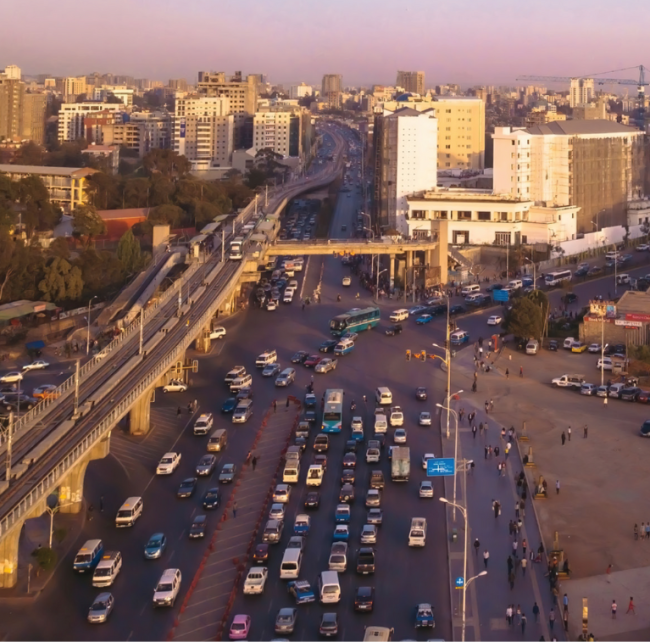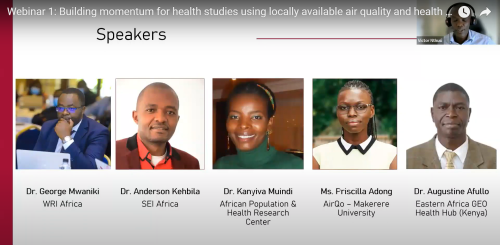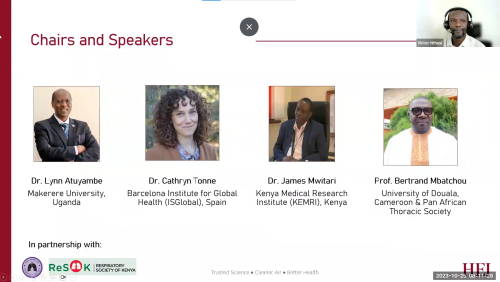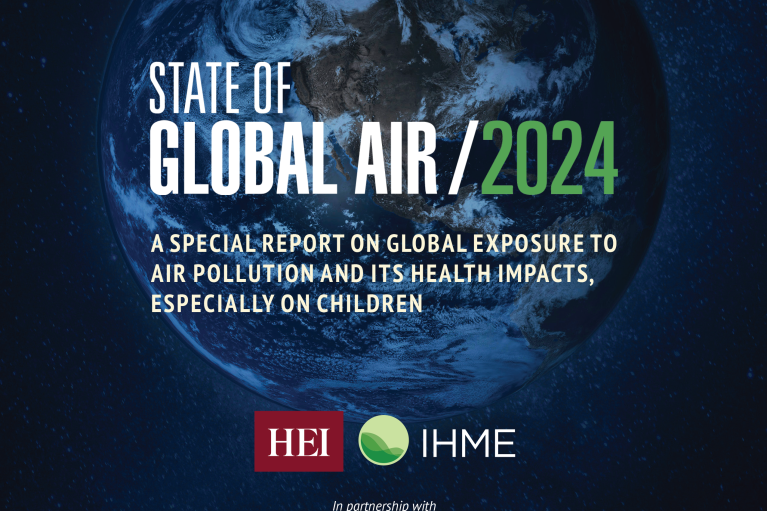
East Africa has made significant improvements in understanding and addressing air pollution and related health effects. While no country has successfully eliminated air pollution, countries that have had demonstrable success in emissions reduction have traditionally relied on the enforcement of ambient air quality standards with routine air quality monitoring. Some of the unique challenges facing East Africa include limited availability of air quality data due to limited monitoring infrastructure, a lack of data translation for policymakers, and resource and capacity constraints to utilize existing health monitoring systems.
We recently hosted a webinar series that brought together a panel of researchers from across Africa with a common goal: identifying opportunities for expanding the reach and capability of East African air pollution programs. The conversations covered a wide range of topics, including a focus on international and multicity collaborations between researchers, nonprofits, community activists, and policymakers to address existing research and data gaps. Below, we highlight key messages from the first two webinars that focused on availability and usability of air quality and health data and strengthening capacity for locally led research programs.
Data to action
Continuous air quality monitoring provides reliable data for research, public advocacy, and decision-making and. Across East Africa, data gaps have led to the creative development of fit-for-purpose tools, such as the rapid adoption of low-cost sensors for air pollutant measurements.
Experts in these webinars focused on data availability and usability. To make progress on air pollution, there must be compelling and trusted evidence of the issue, demonstrable impact on citizens and vulnerable populations, and clear demands to fix the issues through collaborative engagement across interested parties. Urgent and clear demands for improvements are more likely to be met by policy formulation and implementation. From a scientific and policy context, this raises an important question: Can air quality research in Africa be needs-driven?
Research and data providers can play the role of honest brokers who understand the needs and processes of decision-makers and other relevant users. Throughout the webinar discussions, experts emphasized the importance of harmonization and quality assurance of air quality data to enable its usage for research. While challenges remain, there are also areas where progress has been made. The AirQo project in East Africa not only provides validated data in a variety of formats to different audiences but also provides access to an open-source resource to calibrate sensor data.

Building a health case for action
HEI’s interactive literature database for East Africa shows growing evidence of the health effects of air pollution in the region. However, the range of health studies needs to be expanded to include studies that assess the effects of long-term exposure to air pollution; these are typically associated with a larger health and economic burden.
Health and Demographic Surveillance Systems (HDSS) offer an opportunity to strategically pair existing air quality monitoring datasets with health data to answer locally relevant questions. Across Africa, there are multiple HDSS sites that routinely collect mortality, morbidity, socioeconomic, and migration data. Various health outcomes are also monitored, including child, maternal, and cardiovascular. For instance, according to the Nairobi Urban Health and Demographic Surveillance System, respiratory tract infections accounted for 35% of deaths in children under 5 years between 2003 and 2016.
Collaboration with networks currently collecting HDSS data can greatly expand the scope of health studies in the region and help address existing research gaps. Some projects, such as the Eastern Africa GEOHealth Hub, are working to combine continuous air quality monitoring data with health data from hospitals to understand associations between air pollution and health.

Strengthening capacity
Another priority identified during the webinars included the need for further investment to strengthen air quality management capacity with the improvement of air quality monitoring infrastructure. Ongoing examples indicate that existing systems of collaboration can be leveraged to promote and share research by and for East Africans.
Improvements in air quality can be realized when capacity strengthening programs focus on long-term skill building and local resource development. For example, the CLEAN-Air Africa consortium has established an Air Pollution Centre of Excellence that provides mentorship and support to academic training, including PhD programs and postdoctoral research. Similarly, the Pan African Thoracic Society (PATS) MECOR program provides training on research methods to promote education and research on lung health across Africa. There are emerging opportunities to promote learning from experiences within and across the region. Projects such as the Clean Air Catalyst in Nairobi are bringing together a broad range of organizations to support local policy action.
Building scientific evidence on the health effects of air pollution in East Africa will require local, national, and regional efforts and collaborations across sectors and disciplines. When air quality improves, so does population health.
This is the first part of a two-part blog on key messages from the HEI East Africa Air Pollution and Health Webinar Series.
Materials from the webinar series, including slides and recordings, are available on the HEI website. We would like to thank our cohosts, the Pan African Thoracic Society and the Respiratory Society of Kenya, for providing input and shaping the agenda for these webinars. We would also like to thank AirQo for their support in dissemination of workshop materials.


